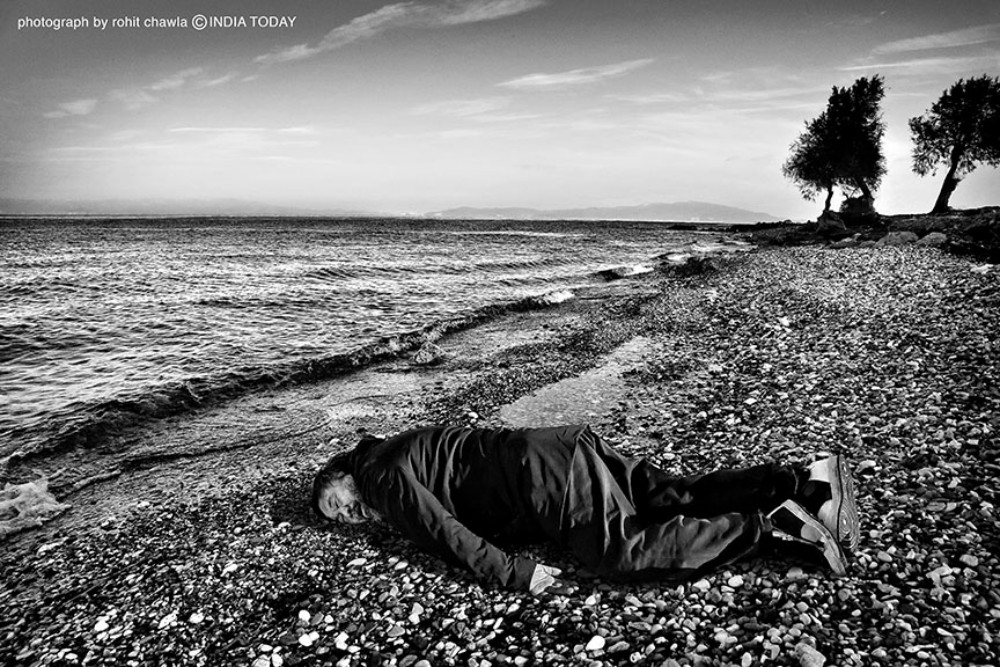Ai Weiwei - Portrait Posing as Alyan Kurdi for India Today, 2016

In the cases of Open Casket and The City I, both represented racial hatred and violence that could be potentially traumatic for the viewer. But the offended were offended not because of the content, but because the content was created by artists who are not black. An important distinction can be made regarding the controversy surrounding these pieces when compared to others also deemed offensive, as was the case for a photo of the artist Ai Weiwei posing in the place of a drowned child refugee. The photo was shot by photographer Rohit Chawla for the cover of India Today, who said later that Ai and his team “actively helped in staging this photograph for us,” 55 so authorship can and should be attributed to Ai as well.
When Ai’s portrait was protested, the criticism was not directed at his identity but at the execution of the piece, itself. The egoism of imitating a drowned child by laying down and playing dead combined with the stylized black and white aesthetic was the issue, as the original photo that Ai was imitating did not have such formal qualities. Whether one agrees with the accusations of “egotistical victim porn” leveled against Ai for the photo,56 the criticism crucially does not focus on the fact that Ai is Chinese. Instead, the criticism stems from the fact that Ai is not Alyan Kurdi, the drowned child.
This distinction may seem arbitrary because, like Open Casket and The City I, the criticism of Ai’s self-portrait is derived from the identity of the author. But within the boundaries of this criticism, one could substitute Ai with any other artist, and the accusation of egocentrism would not change. It does not go so far as to state that, because Ai is Chinese, he does not have the right to make work about the plight of Syrian refugees, which his practice has recently focused on57. Rather, the criticism makes the case that posing oneself as a drowned child is simply an inept attempt at expressing solidarity, and that doing so distracts from the attention that could have been brought to the Syrian refugee crisis. Instead, this attention was refocused on Ai himself and the ridiculousness of the photo he reproduced.
If the potential value of offense is that it brings attention to an issue, Ai’s self-portrait shows that unjustified offense can potentially do the opposite. Like Mirror Box, misapplied offense distracts from and trivializes the issues the artist is attempting to contend with.
